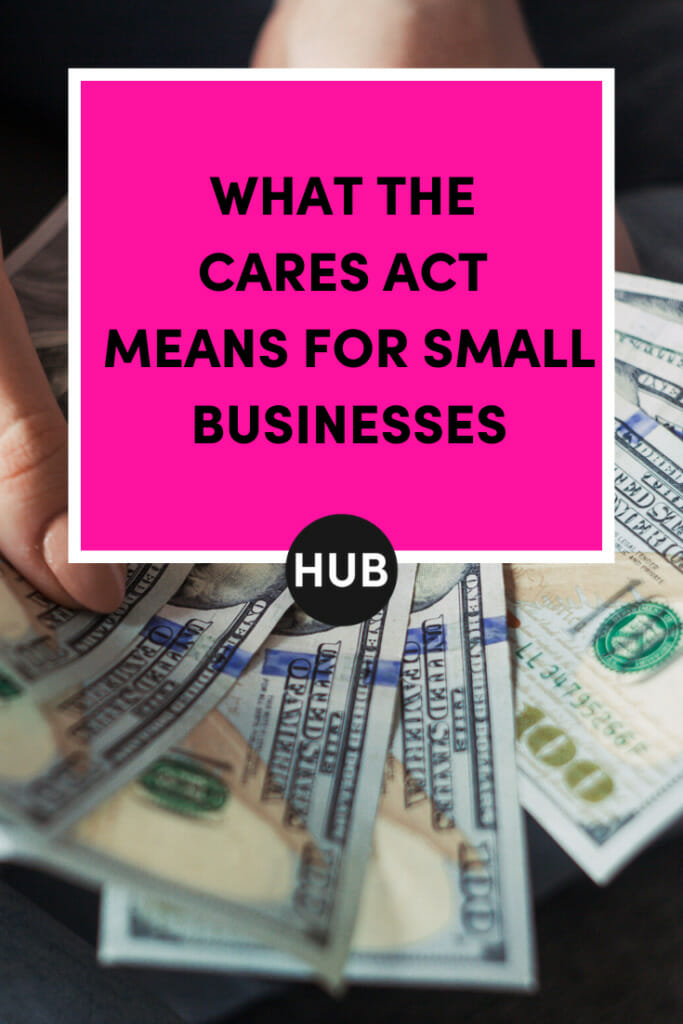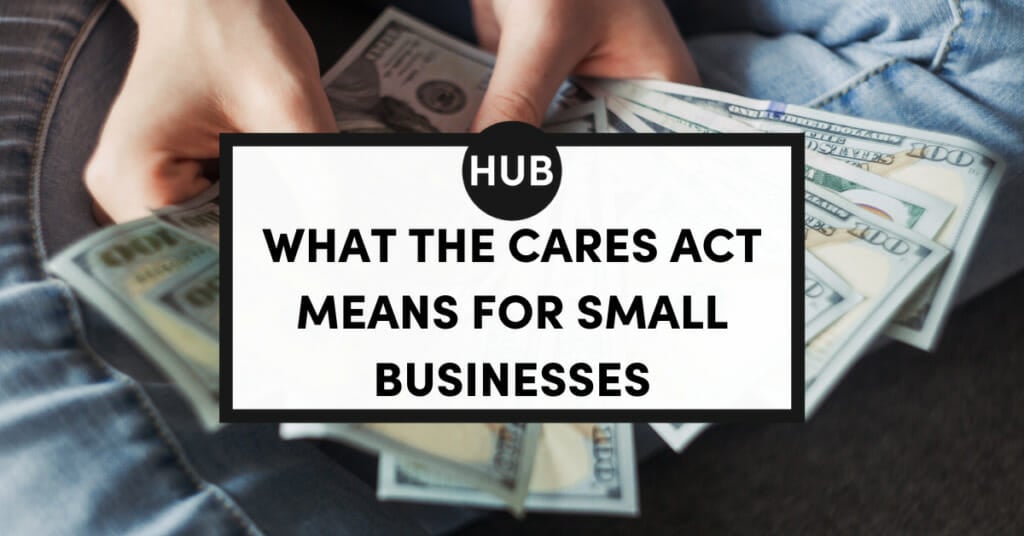What is the Paycheck Protection Program – Essentially Free Money for your Small Business!
On March 27th, Congress officially passed the CARES Act which opened up a new type of SBA lending program called the Paychecks Protection Program. What will prove to be a very popular option for small business owners that have been adversely affected by the COVID-19 outbreak, this program includes a forgiveness (loan) plan that potentially does not have to be repaid and there are no upfront fees to access it!
This article directly talks about the PPP program in the CARES Act, but please keep in mind, relief for your small business is coming in three buckets.
1. Tax Filing extension to July 15th, and unknown additional tax credits being discussed.
2. SBA Disaster Loan – EIDL which is a $10,000 advance to small businesses (forgivable) to help cover mentioned expenses. See the application here.
3. The CARES Act and PPP program – to help small business owners maintain employees, covering payroll, rent and utilities in a forgivable loan equal to 2.5x your documented expenses. Please read further.
Your attention to these programs through relationships with your banker, accountant, and financial advisor are critical during this unprecedented time.
Let’s break down the PPP program further for you below.
Please note, that as this was created, many are still working to better understand some of the program details, so for the latest information, please speak to your banker!
What can I use this money for?
The main goal of this program is to keep people employed and businesses afloat by giving small businesses cash quickly so they can remain open, pay employees and keep our economy moving forward during this volatile time. The forgiveness piece of this “loan” must be used on payroll expenses, mortgages, utilities, group benefits and any interest on debt that was established prior to February 15th, 2020.
Who is eligible for this program?
All small businesses with less than 500 employees are eligible. The two most important stipulations are that the businesses must still be in operation today and had to exist prior to February 15th, 2020. They also must still be paying salaries or wages to their employees or paying subcontractors that will be receiving a 1099 form. Remember, it is important to know that you have to be able to show that your business has been economically impacted by the coronavirus! You can do so by showing a reduction in sales, cancelation of events, reduction in membership fees, etc. In addition, sole-proprietors, partnerships, independent contractors and even 501c-3s not-for-profit can apply for this lending program, essentially any individual who is self-employed and regularly carries on a trade or business.
What are the terms of the loan?
These loans are set up so there are:
- No fees for applying!
- Collateral not required, no personal guarantees by the business owner of any kind.
- No need to present proof that you sought financing elsewhere.
- Interest Rate of 4% is a preset maximum. (Changing)
- Amortization is set at a maximum of 10 years.
- Deferred payments – some banks will allow borrowers to defer payments for 6 to 12 months.
- Penalties – there are no pre-set payment penalties.
- Forgiveness program – potentially 100% of the loan can be forgiven if all requirements are met.
What are the three requirements of the Loan Forgiveness Program?
1. The business has to spend that money on eligible expenses such as payroll, mortgage, utilities, interest expenses.
2. These expenses have to be incurred within eight (8) weeks after the loan is approved.
For example, if you are awarded a loan on April 10, 2020, in the amount of $65,000 you would have to spend $65,000 on the above-mentioned expenses within the next eight weeks. If the business owner does not do this, they will start to lose a portion of that forgiveness.
3. The business must maintain the same number of employees between February 15th – June 30th, 2020 as it did during that same time period in 2019 or from January 1st, 2020 – February 15th, 2020.
This is to ensure that business owners are not reducing employees and business owners also cannot reduce an employee’s wages by more than 25% if they make under $100,000 in annual compensation.
What happens if the rules are not followed?
If a business owner does not follow these rules, the loan can go from being “forgiven” to being a “traditional” loan and will need to be paid back at the rate and in the amount set by the amortization schedule. This type of assistance can be 25-100% (or less forgiven depending on the requirements being met by the loan).
Due to the fact that this bill was just recently passed and is over 800 pages in length, it is to be expected that there will be more clarification to come on the forgiveness percentages and unique business scenarios as well as clarification on the questions about re-hiring your staff that you may have recently let go before you had access to these funds.

What if we already let go or furloughed our employees?
It appears that IF you bring the employees back by June 30, 2020, your business will not be penalized.
Is this taxable income:
NO, if these funds are forgiven they are not taxable, they actually become a non-taxable grant from the US Government.
How is the loan calculated:
These loans are called the Paycheck Protection Program therefore, the funds provided to small businesses are really meant to pay employees. Therefore, the calculation is based on past payroll documentation and business owners will be asked to submit payroll documents for the last 12 months. That amount will then be divided by 12 and multiplied by 2.5.
This does include: salary, wages, commissions, tips, vacation, family medical or sick leave and even payment of state or local tax assessed on the compensation of the employee.
Example: If your annual payroll is $50,000/12months = $4,166/month x 2.5 = $10,416 loan amount.
If you were not in business in 2019, this amount is calculated using January and February payroll numbers (2.5 x average total monthly payroll costs incurred for January and February).
Therefore, if the company gets approved for a $10,000 loan they simply need to prove qualified expenses of $10,000 over the next eight weeks and once they can do that the business owner can apply to have that loan completely forgiven!
What part of the loan is forgiven?
The amount forgiven is calculated by adding up your eight week total of payroll costs, utility payments, interest on a mortgage, plus your rent or lease payment.
For Sole-Proprietors, Independent Contractors, and Self Employed individuals:
This includes the sum of any compensation or income of a sole proprietor or independent contractor that is a wage, commissioned income, or net earnings from self-employment that does not exceed $100,000 in one year as prorated for the covered period.
How do businesses apply for these loans?
This specific loan must be applied through a bank and not the SBA.gov website. As you can imagine, banks are being inundated with multiple calls by the hour, so we recommend that you do this as soon as possible to start the conversation with your local lender. Take action now! And of course, it’s extremely important that you are ready and prepared with your application and documentation. The banks are compensated by each business they lend money to, therefore they will want to push these loan applications through in a timely manner.
Just know, this is an excellent opportunity to retain your employees and provide them with tasks that they can accomplish for you even while your business may be closed. Think of new marketing avenues, technology options, organization, cleaning, re-branding, etc. We always wish to have more time on our hands right? Well here is it! We highly recommend utilizing the gifts and skills of your employees at this time to help you come back better than ever!
For MORE information on these programs, please use the following resources.
1. Contact your local bank (it is critical that you maintain a banking relationship near you, in good times and bad. Your local banker will fight harder to save you than Paypal, Shopify or any online credit options you take.) Your local bank will have the application for the PPP Program.
2. Speak with your accountant or financial advisor on the best options for your business.
Use the following additional tools:
PPP- Paycheck Protection Program Checklist
Creative Planning (Hub’s personal partner) – COVID-19 Resource Guide on all things investing, SBA, FMLA and HR. What you need to know now.
Boutique Hub Corona Retail Resource Center
EIDL program, broken down by Immediate Resource Center
Balance CFO Article – Breaking Down Relief Efforts
Have questions, please ask our team at the Hub anytime!
Cheering for you Boss!
Recent Posts:
HOW TO PREPARE YOUR BOUTIQUE FOR COVID-19 CORONAVIRUS AND IT’S IMPACTS ON BUSINESS

